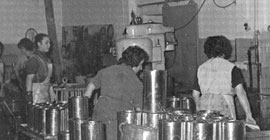 Candied fruits are star products for Christmas but also for Ramadan, the month of fasting and feasting together for Muslims all over the world. But little else is known of this natural colorful candy that decorates the desserts of the most endearing holdays of the year or add the topping on the birthday cake of thousands of people everywhere in the planet.
Candied fruits are star products for Christmas but also for Ramadan, the month of fasting and feasting together for Muslims all over the world. But little else is known of this natural colorful candy that decorates the desserts of the most endearing holdays of the year or add the topping on the birthday cake of thousands of people everywhere in the planet.
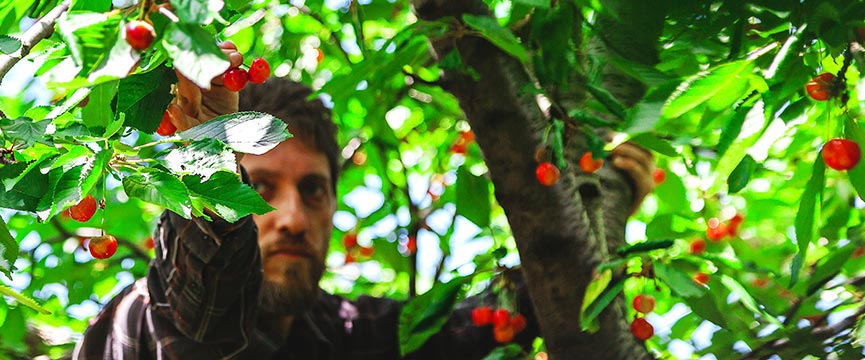
At Lazaya, one of the most representative manufacturers of candied fruits from Aragon (nearly 80 years in the business), the third generation of the family is wishing to take you on a trip to know the fascinating world of candied fruits, since the very moment they are picked by hand from the tree until they reach your table and many other ones’ in all the continents. Are you ready…? The tour of Aragon’s candied fruits does start!
Fresh fruit is picked by hand from the fruit trees
Fruit is still slightly green when picked by hand from the tree, and must be healthy and a very high quality product to enter the processing chain. Candied fruits are made from fresh fruit harvested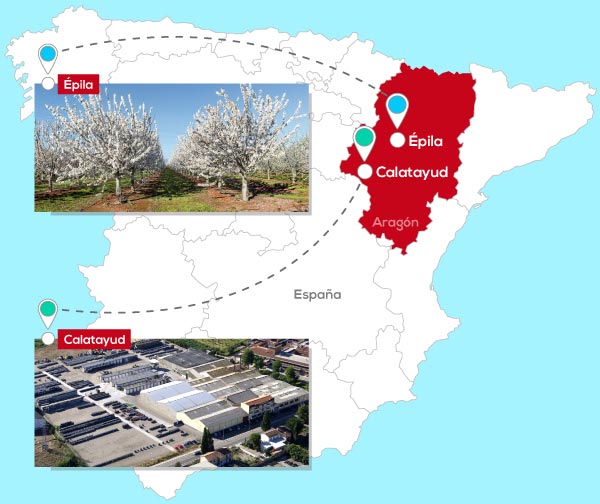 in the region near Lazaya’s factory in Calatayud in the same way it has been done since the ancestors of the three Lazaro brothers running the company founded it in 1940. A large proportion of the fruit reaching the facilities to be transformed into delicious glace cherries comes from the 130 hectares of plantations that Lazaya owns in Épila (Aragón).
in the region near Lazaya’s factory in Calatayud in the same way it has been done since the ancestors of the three Lazaro brothers running the company founded it in 1940. A large proportion of the fruit reaching the facilities to be transformed into delicious glace cherries comes from the 130 hectares of plantations that Lazaya owns in Épila (Aragón).
For occasional specific needs, the fruit harvest from other trusted local producers is sometimes required to complete production. The control of nearby suppliers and logistics until the raw material arrives at our facilities allows us to select fruit very well, according to our high quality standards.
In total, Lazaya processes more than 3 million kilograms of fruit at its different production lines!
Work in the plantations previous to the processing of candied fruits
An average of five people work in the plantation all the year round. But in the fruit season, this figure can be quadrupled. There are many tasks that must be done throughout the year before the time of harvest arrives: special pruning, sustainable irrigation, natural pollination and, finally, fruit harvesting.
Traditional techniques have been combined with the most modern technology for all these processes.
✔ IRRIGATION: BECOMING MORE SUSTAINABLE
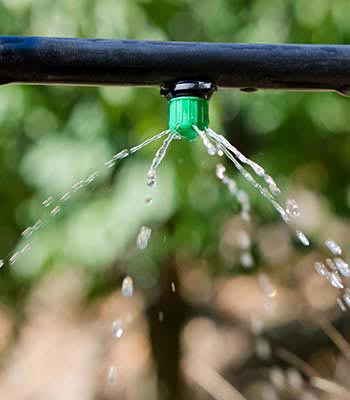
Rain continues to be fundamental for fruit trees growing, as it has always been, although new technologies allows to manage rainwater in a much more efficient way. For example, two water ponds for collecting rainwater “save” a lot of pumping (and, therefore, electricity consumption) in years of cumulative rain like the current one. And to extract the maximum performance from rainwater, our own meteorological station measures the transpiration of the leaves on the trees to establish the minimum requirements of irrigation. It is then that watering is performed by dripping.
But 2018 is the year that will mark the beginning of a very ambitious plan to move towards sustainable irrigation with a system even more efficient than dripping: underground irrigation, which will be introduced in 12 hectares of land this year, and will continue to be implanted in all the plantations. This measure, in addition to implementing important savings in irrigation water, will allow us to minimize the use of herbicides, since weeds on the surface tend to disappear when they lack surface water.
✔ PRUNING: SHAPING THE TREE TO BE RESPECTFUL OF THE FRUIT DURING HARVEST
The selection of the best varieties of fruit to make our excellent candied fruits allows us to generate a product of high quality already from the sowing. Once we have selected the best varieties of fruit trees, we can model the trees during their growth phase.
This is done with special prunings that facilitate easy and respectful harvesting of the fruit once the tree has matured.
✔ BEE POLLINATION: SPRING BRINGS THIS ANNUAL DANCE
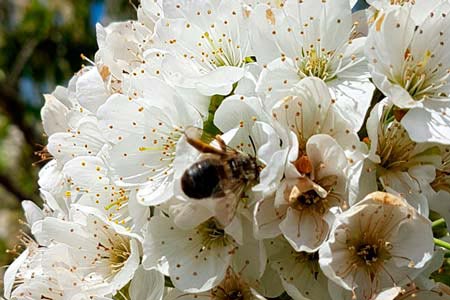
Pollination is one of the most beautiful stages of production for those who love the countryside: once the fruit trees have blossomed (cherry trees do in April), bees begin their annual dance around the clusters of white flowers. Natural pollination is performed by bumblebees in a controlled manner: we place them there in hives so that they can carry out their laborious and intensive task in the manner envisaged by Mother Nature. “These bumblebees give us many joys, because we can then pass them to different crops so they can continue pollination on the fruit trees that bloom later in spring,” explains Alfonso Lázaro, Purchasing Director of Conservas Lazaya.
Fuit crop arrives at the factory to make candied fruits
 The arrival of the new fruit crop at Lazaya’s factory to be transformed into different types of preserved fruit marks the moment when the facilities start operating at full capacity. The factory employs about 60 people on average, but we expand the workforce by some 10 more people in the cherry-picking season. The majority of the workforce is female (it has traditionally been that way), and some workers are already second generation. Seasonality is not as determinant as it may seem, since many fruits and in very different forms are produced (light syrup, candied cherries, Maraschino cherries, Amarena cherries …), so the campaigns are overlapping each other.
The arrival of the new fruit crop at Lazaya’s factory to be transformed into different types of preserved fruit marks the moment when the facilities start operating at full capacity. The factory employs about 60 people on average, but we expand the workforce by some 10 more people in the cherry-picking season. The majority of the workforce is female (it has traditionally been that way), and some workers are already second generation. Seasonality is not as determinant as it may seem, since many fruits and in very different forms are produced (light syrup, candied cherries, Maraschino cherries, Amarena cherries …), so the campaigns are overlapping each other.
In the glacing area, work is distributed regularly throughout the year. However, the period of greatest production in the factory of the Lazaro brothers comes from August to December, for Christmas season. The huge increase in exports in recent years has also led to changes in the way these production peaks are distributed, and there are other peak periods, such as the months leading up to the time of Ramadan, that changes from year to year (the festivity lasts one month, and has no fixed start date, as it is guided by the lunar calendar).
✔ MODERN TECHNOLOGY VS. TRADITION IN PROCESSING CANDIED FRUITS
Lazaya is the perfect mix between tradition and cutting-edge technology in the processing of fresh foods. After all, there is an awareness that you can not lose the traditional methods of a business that has been producing delicious products with the fruit of Aragon for three generations… Jesús Lázaro, the company’s manager, makes use of memories and conversations heard in his childhood about how cherries were boned by hand, one by one, with the only help of a pick.
Undoubtedly, it was a hard work that has been carried out with pitting machines for more than five decades at the time. The selection of the fruit was also done manually in those days. That is another task of the processing that has taken a radical turn in recent years: today, sorting machines are responsible for discarding the second-quality product, as well as any remains or product with the presence of bones. In addition, the chains of production have also performed radical changes in the part of the glacing lines: from the small clay pots to the glacing machines of 1,500 kg, a giant leap has been taken…
A continuous vacuum system allows a greater control of the parameters of glacing, allowing to obtain high quality and much more standardized candied fruits, since the processing temperature and the degrees brix of the product are controlled all the time.
“One and a half million kilograms of fruit are transformed
in delicious candied fruits in Lazaya’s facilities.”
One and a half million kilograms of fruit (half the production that enters Lazaya) is transformed in exquisite candied fruits. The quality, a hallmark of the firm, remains being the same than in the past: it is one of the values that been passed down from parents to young generations… But let’s not get ahead … Before being candied, the fruit should remain a few weeks in an special mixture to achieve a longer expiration date and stabilize the product. Let’s see what happens with it…
✔ FRUIT PRESERVATION IN BRINE
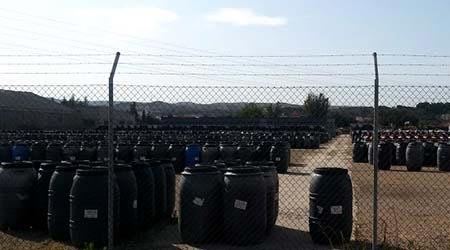
Once pitted and selected, and before glacing, fruit must be kept in brine: a minimum of two months of storage in tanks for the cherry (the smallest fruit) is needed , bu this period is extended proportionally to the size of each variety of fruit. The conservation is carried out in 220 liter PVC barrels, in which 50-60% is fruit and the rest, brine. In the case of cherries, accounting for half of Lazaya’s production, preservation is also carried out in large-capacity containers (1,000 liters) and huge 10,000-liter tanks. Once it comes out of the liquid, the fruit is ready for a new stage that will bring it closer to its final destination: becoming the delicate candied fruits that so many people love tasting … But fruits still need to be conditioned to match by size, give its final shape and eliminate those parts that are not to be preserved…
✔ CONDITIONING OF FRUIT: SIZING, CUTTING, PITTING…
When fruit is taken out from the brine, it needs to be conditioned before glacing. The process is different according to the variety of fruit, but in general the first tasks are sizing, pitting and cutting in different presentations: cubes, halves, fourths, strips, portions…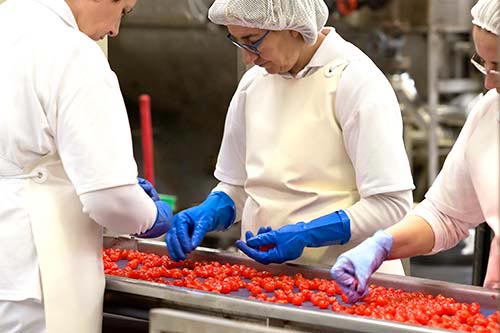 All these processes were made by hand in the past, but today, they are performed with the help of specialized machines (calibrators, pitting machines, cutters…).
All these processes were made by hand in the past, but today, they are performed with the help of specialized machines (calibrators, pitting machines, cutters…).
And what about the cherries…? Cherries are “the most naughty fruits”, coinciding with the fact that they are “the little ones of the family”… To be glaced, cherries require special dedication: separating the clusters and destemming, in some cases, are two processes to sum up to the other ones mentioned before. As you can see, subtlety with cherries must be great.
“Pitting cherries without destemming them
depends on the way they are placed on the pitting machine.”
Stemmed cherries, perfect for cocktails, are pitted in a special way: every cherry is transversally placed on the pitting machine so that the punches don’t damage the stem when they punch a hole. A delicate task, isn’t it?
✔ GLACING (AND ITS SECRETS)
Once the fruit is ready, the glacing process begins in order to turn it into that ‘natural candy’ we talked about at the beginning of the article. The fruit is washed and boiled to soften it and eliminate traces of brine that may remain is the exact moment that puts an end to the preserving tasks and starts glacing, a key phase in the processing of the glace fruit in our facilities of Calatayud. Once the fruit cools, it is placed in one of the glacing machines, where a syrup composed of sugar, glucose and water is added. “Other additives such as dyes, flavours, etc. may be added to this syrup to adapt candied fruits to each customer’s specific needs”, as it is explained by Ignacio Lázaro, manager of the factory operations and “guardian” of Lazaya’s secret recipe of its delicious candied fruits. The concentration of syrup is minimal in the first stage of the process of glacing (10/15 brix) and then gradually increased to reach the desired concentration, which is in a range between 40 and 75 degrees Brix.
Once the fruit cools, it is placed in one of the glacing machines, where a syrup composed of sugar, glucose and water is added. “Other additives such as dyes, flavours, etc. may be added to this syrup to adapt candied fruits to each customer’s specific needs”, as it is explained by Ignacio Lázaro, manager of the factory operations and “guardian” of Lazaya’s secret recipe of its delicious candied fruits. The concentration of syrup is minimal in the first stage of the process of glacing (10/15 brix) and then gradually increased to reach the desired concentration, which is in a range between 40 and 75 degrees Brix.
“The increase in degrees Brix should be gradual
to prevent the delicate skin of cherries and plums from becoming wrinkled…”
The most delicate part of the process is to increase temperature progressively to prevent the fruit from wrinkling, especially in the case of varieties with the most fragile skin, specifically, cherry and plum. Depending on the chosen concentration, the product will be subsequently pasteurized (or not) to ensure sterilization at the time of marketing (it is considered that sugar itself is already a good preservative avoiding the need of pasteurization above 70 degrees brix). What this process achieves is a longer shelf life, which ranges from 12 months for products without preservatives, 24 months for products with preservatives (sorbates) and without pasteurization, to 3 to 5 years for pasteurized products.
Who eats more candied fruits…?
“Up to sixty per cent of our sales are exports”, as Jesús Lázaro, general manager of the company, says. The most exported candied fruits are cherries (natural, Maraschino and Amarena) and candied fruit cubes. Both of them are shipped to the 5 continents, many of them to Middle East and Far East countries, Oceania, Central and South America…
An additional difficulty Lazaya has bypassed thanks to its huge exporting experience is related to the different food laws ruling in every country, especially those referring to colorants.
What is more, the same products are also available in different presentations depending on the place of destination and, of course, the market they are targeted (retail, horeca, bakeries…).
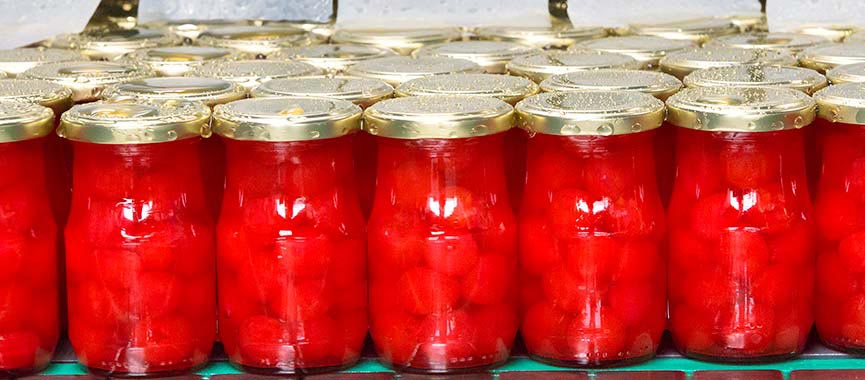
In Spain, most of Lazaya’s candied fruits are used for decorating traditional Christmas desserts such as Roscón de Reyes and turrón de frutas (fruit nougat). But candied fruit cubes are alse used for pastries fruit filling or dairy (yogurt, ice cream…). So, if you take a piece of Roscón de Reyes or a fruit filled cake next Christmas, even if it comes from a baker’s workshop or it is manufactured, you should know that you may be taking Lazaya’s exquisite candied fruits.
What percentage of the 40 percent of the production sold in Spain is used in Christmas traditional food? “We do not have exact data, but surely, between 70 and 80 percent of the production of glace fruit that we sell for the national market are intended for making roscón de Reyes, fruit nougat and fruits of Aragón“, Jesús Lázaro, the company’s general manager explains.
A staggering 250,000 kilograms of candied fruits are shipped from the factory of Calatayud to be consumed in Spain at Christmas!
Candied fruits: a gorgeous colour and taste explosion in your mouth
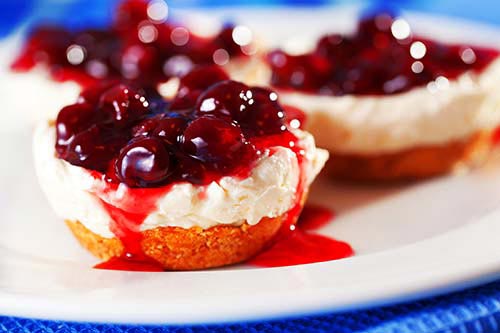 What do candied fruits have to attract the spotlight on the table? The first thing to strike attention are the bright colors of candied fruits. Greens, reds, oranges and intense yellows are the true colors of natural fruits, but enhanced as if they had come from Van Gogh’s paintbrush… The shape of the cut fruit is also eye-catching: sometimes, they are perfect cubes; other times, organic forms that respect the natural sections of the fruit: sliced, wedges or even whole when it comes to small fruits. Finally, the texture may be surprising when we put them in the mouth as they are soft and crunchy at the same time…
What do candied fruits have to attract the spotlight on the table? The first thing to strike attention are the bright colors of candied fruits. Greens, reds, oranges and intense yellows are the true colors of natural fruits, but enhanced as if they had come from Van Gogh’s paintbrush… The shape of the cut fruit is also eye-catching: sometimes, they are perfect cubes; other times, organic forms that respect the natural sections of the fruit: sliced, wedges or even whole when it comes to small fruits. Finally, the texture may be surprising when we put them in the mouth as they are soft and crunchy at the same time…
Tasting candied fruits is also preceded by an experience that includes the eyes and the palate, but also the emotions and memories that these perceptions evoke: candied fruits take us back to a festive family atmosphere, so that we can indulge in them blameless on special occasions…
Lazaya offers a wide catalogue of preserved fruit, you can find here. Do you need to purchase wholesale candied fruits? Or may be you need exquisite candied fruits to make your cakes at your bakery? We can help you anyway: contact our preserved fruit company. It will be our pleasure to attend you.






